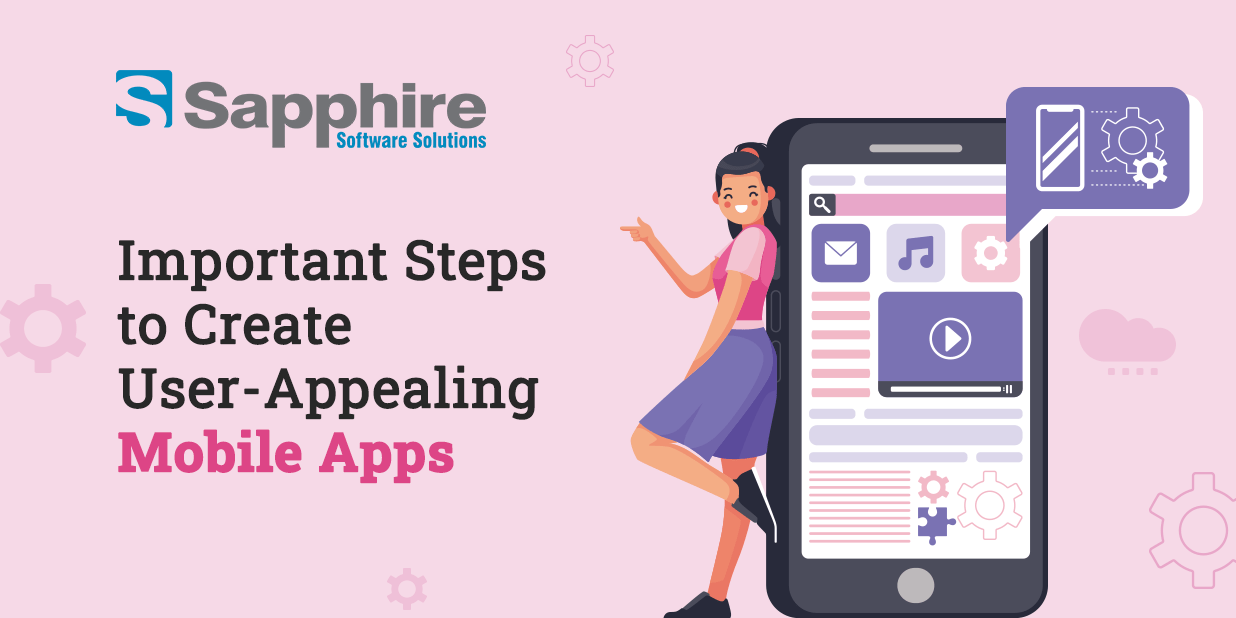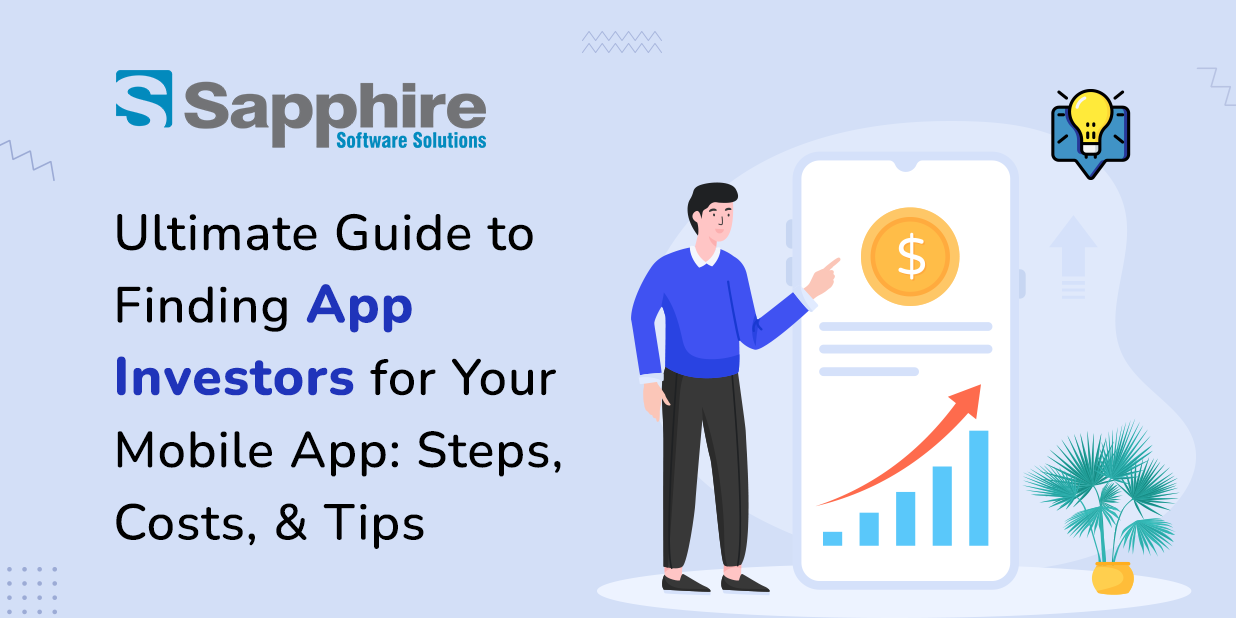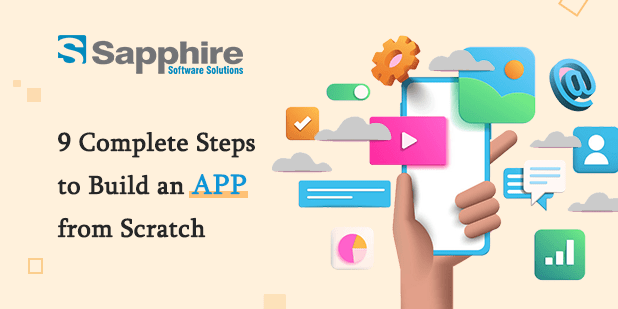Creating a user-appealing mobile app requires a strategic approach to meet user expectations and enhance engagement. By focusing on intuitive design, seamless functionality, and user feedback, businesses can build apps that resonate with their target audience and drive long-term success. when competition is tough, and customer expectations are high, it is vital to create user-appealing mobile applications. Intuitive and well-designed software may significantly impact user acquisition and retention.
6 Steps to Creating User-Appealing Mobile Apps:-
This blog will lead you through the six stages you must take to deliver mobile app development company in USA that people will adore.
Step 1: Define Your App’s Purpose and Target Audience.
The first stage in building a mobile app that customers would find interesting is defining its function and figuring out who its target market is. Consider starting by determining what need or issue your app is meant to address. Your app will stay focused on its core goal thanks to this clarity of purpose acting as your development process’ North Star, directing all choices.
Conduct in-depth market research to learn about the expectations and routines of your target customers.
Step 2: Research and Ideation.
Research is the second phase in creating mobile applications that appeal to users. To acquire the necessary information and develop innovative ideas, this is the stage when you dive into the market and user environment.
The foundation of this stage is market research. Conduct a comprehensive market analysis to find trends, opportunities, and gaps. Recognize the benefits and shortcomings of the current solutions. Using this expertise, you may adequately position your app and set it apart from the competition.
User opinions are equally important. Participate in focus groups, interviews, or surveys to engage prospective users. Find out what their preferences, pain spots, and expectations are. This direct feedback from your target audience may greatly influence your app’s functionality and user experience.
A broader viewpoint is provided by competitive analysis. Examine the applications of your rivals to determine their advantages and disadvantages. Find possibilities to distinguish out in the industry by providing a better user experience or cutting-edge functionality.
Step 3: Create a User-Centered Design
Every practical mobile app development approach is built on user-centered design. This process involves turning your research and brainstorming into a thoughtful design that suits the tastes and demands of your target market.
Based on the results of your study, start by creating thorough user personas. These personas represent the ideal users, replete with habits, objectives, and obstacles. You can develop an app that connects with your audience by empathizing with these identities.
The structure and flow of your program must be visualized via wireframing and prototyping. To establish the fundamental system and navigation, start with low-fidelity wireframes. Make high-fidelity prototypes that mimic the user interface and interactions as you go. Your design ideas may be tested on these prototypes.
A crucial part of user-centered design is usability testing. Test your prototypes on actual people to get their input on the app’s usability and general user experience. Utilize this criticism to iteratively improve your design and make sure it adheres to user preferences and expectations.
Always prioritize using a mobile-first design strategy. Your design should be customized for screen sizes and touch interactions since mobile users have specific demands and limitations. Developing a user-centered design provides the groundwork for an app that is perceptive, interesting, and capable of smoothly achieving users’ goals.
Step 4: Develop a Functional Prototype
When you have a straightforward user-centered design, the following step is to turn your idea into a working prototype for your mobile app.
It is vital to choose your growth strategy. Based on your target audience and available resources, choose whether to create a native app for iOS and Android, a hybrid solution, or a progressive web app (PWA). Make a wise choice since each strategy has benefits and trade-offs.
Use agile development to divide your project into sprints that are easy to manage. As the project develops, this method gives you flexibility and allows you to adjust to shifting needs and user input. Throughout development, continuous testing must be maintained to find and fix flaws and problems quickly.
A vital component of this stage is back-end development. Ensure your app’s back-end infrastructure is reliable to support its functionality. This might include building APIs to enable communication between the front-end and back-end components, setting up databases, and generating user accounts.
Ensure that any third-party connections your software needs—like those for payment processors or social network sharing—are included in the user experience without interfering. The objective is to provide user-friendly, feature-rich software that meets their expectations.
Step 5: Prioritize Performance and Security
When developing user-friendly mobile applications, performance and security come first. Ignoring these factors may result in a poor user experience and possible data breaches. The order of priority is as follows:
Performance optimization entails fine-tuning your app’s code, assets, and resources to guarantee quick load times and fluid interactions. Reduce the use of images and animations that are resource-intensive and may slow down the system. To identify bottlenecks and potential improvement areas, do extensive testing.
Compatibility across platforms is crucial. Test your app across various platforms, screen sizes, and operating systems to ensure it runs well on all of them. Regardless of the device they use, users want constant performance.
Strong security measures are required to safeguard user information and privacy. Use encryption, secure authentication procedures, and routine security audits to find and fix weaknesses. To stop data breaches, it’s essential to be proactive and watchful.
Updates are often required to fix performance issues and resolve security flaws. To protect yourself against new dangers, keep your program and its dependencies updated. An app emphasizing security has a higher chance of gaining users’ confidence and keeping them as users.
By putting speed and security first, you ensure that your software runs efficiently and protects user data and privacy, which raises its allure and credibility.
Step 6: Gather User Feedback and Iterate
The road is far from ending after your mobile app is out. Maintaining user appeal and happiness requires ongoing user input collection and iterative changes.
Tools for user analytics are essential at this stage. Utilize them to monitor user activity inside the app and spot trouble spots for users. You can identify your weak points with the use of these insights.
Your app needs frequent upgrades to stay current and valuable. Release updates that include bug fixes, user input, and new features. This shows your dedication to user happiness and maintains their interest.
You may experiment with various features, designs, and user flows thanks to A/B testing. You may improve your app’s user experience by comparing user reactions to modifications.
In conclusion, building user-friendly mobile applications requires a methodical strategy that starts with knowing your target market and concludes with ongoing user feedback-based enhancement. As a mobile app development company, we adhere to these six crucial measures to create a great and captivating mobile app. You can also hire mobile app developers in USA to work dedicatedly on your project for long-term success.





































